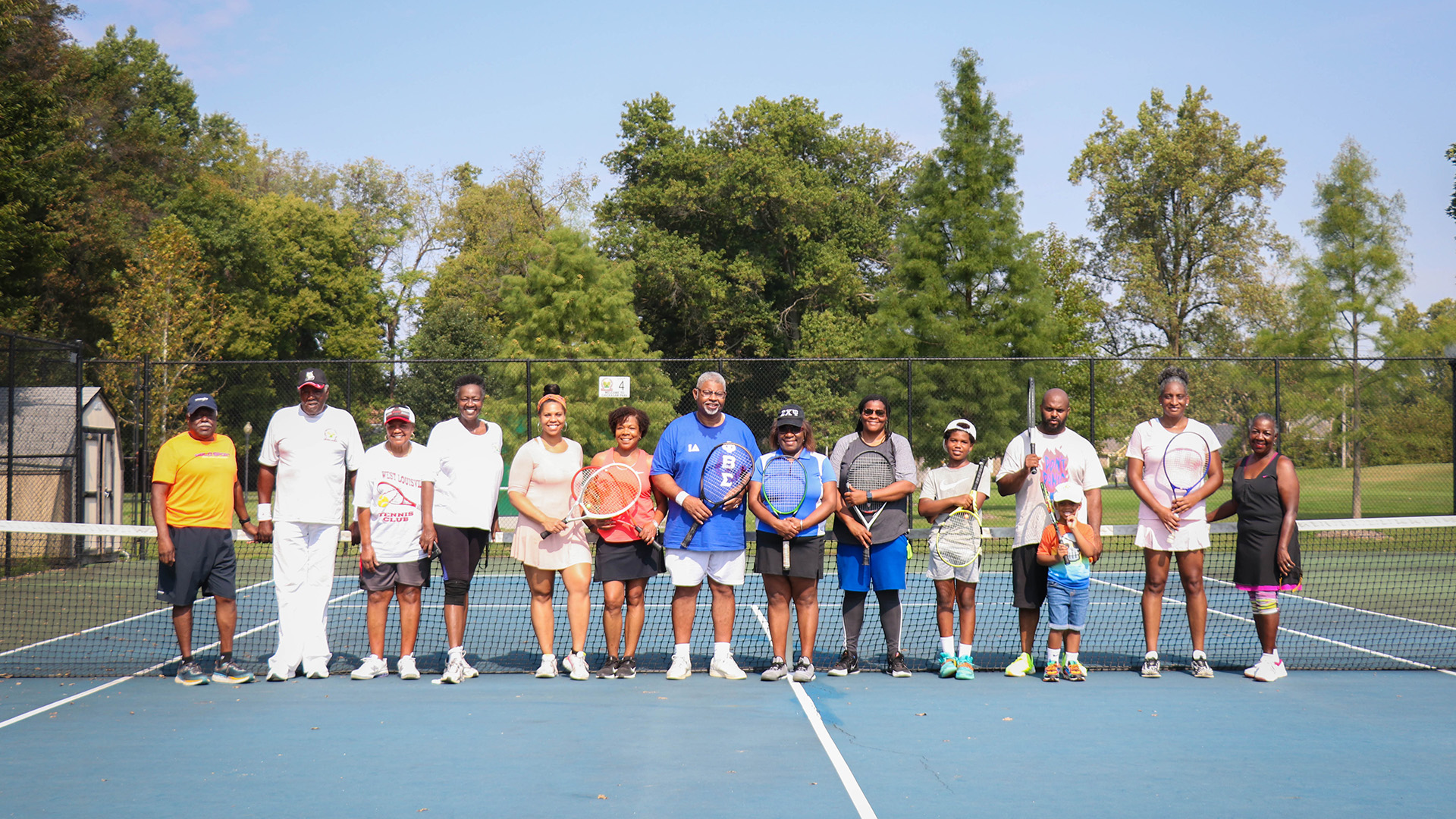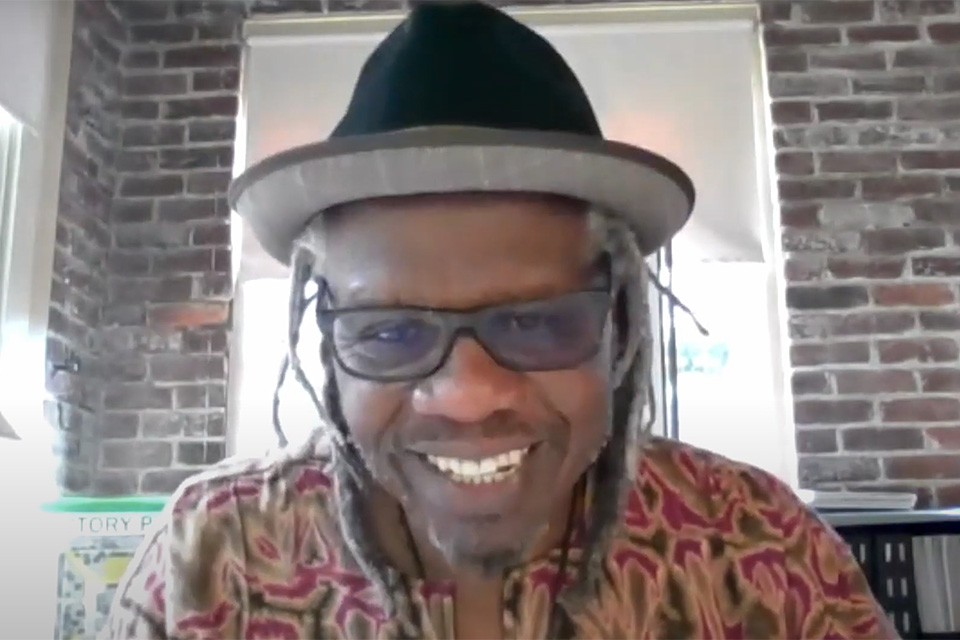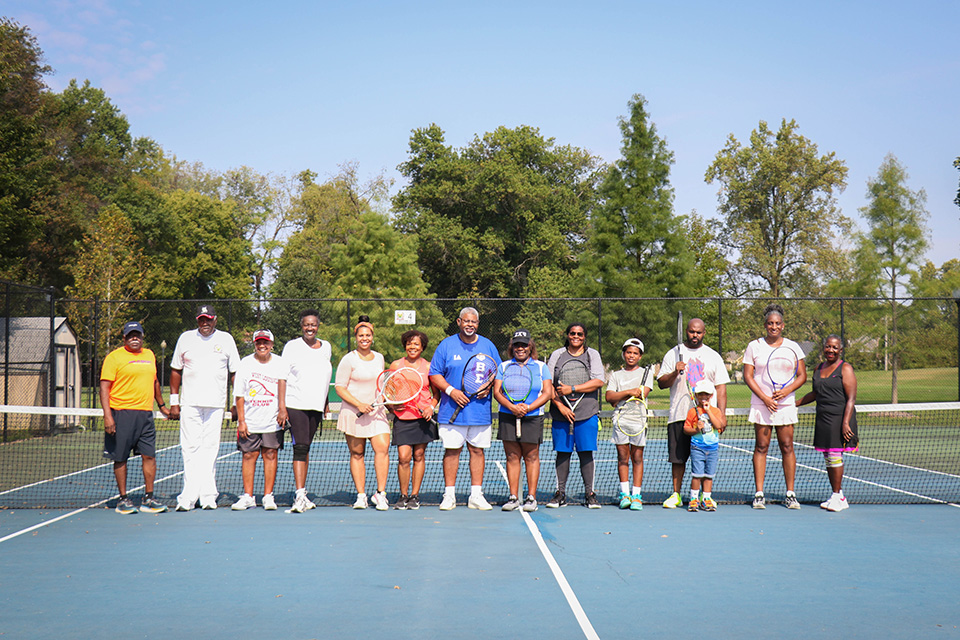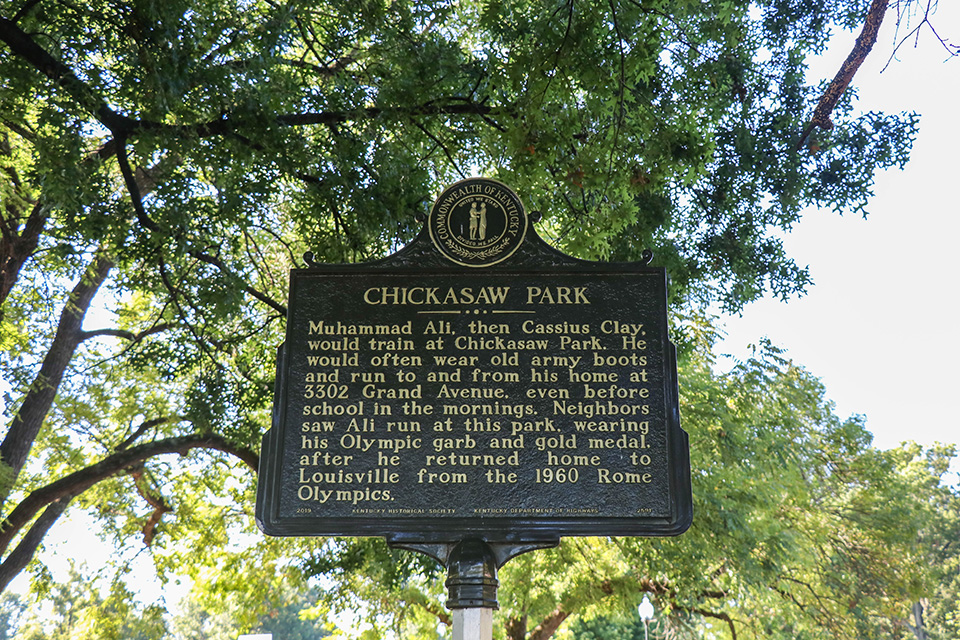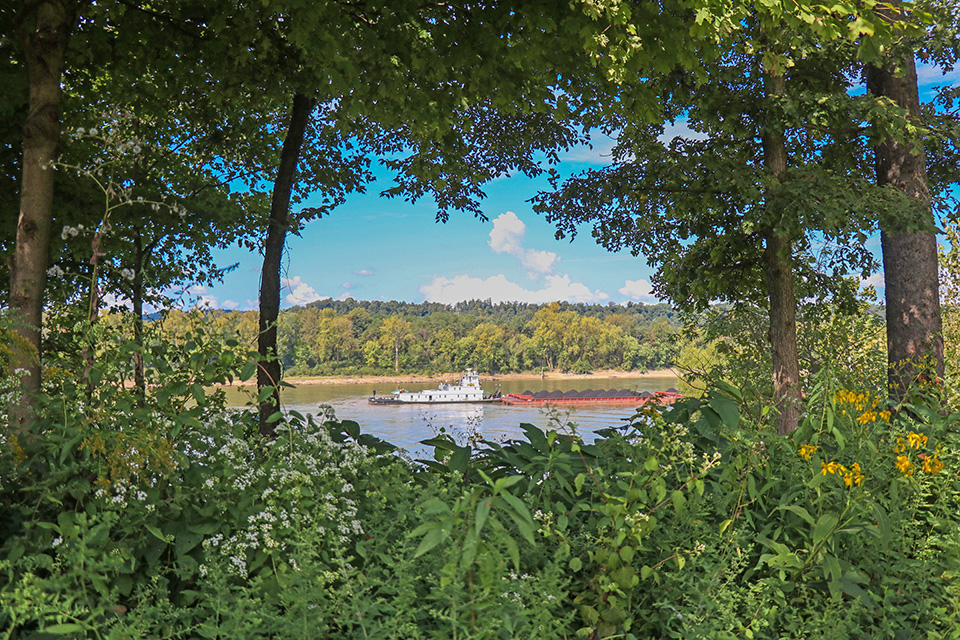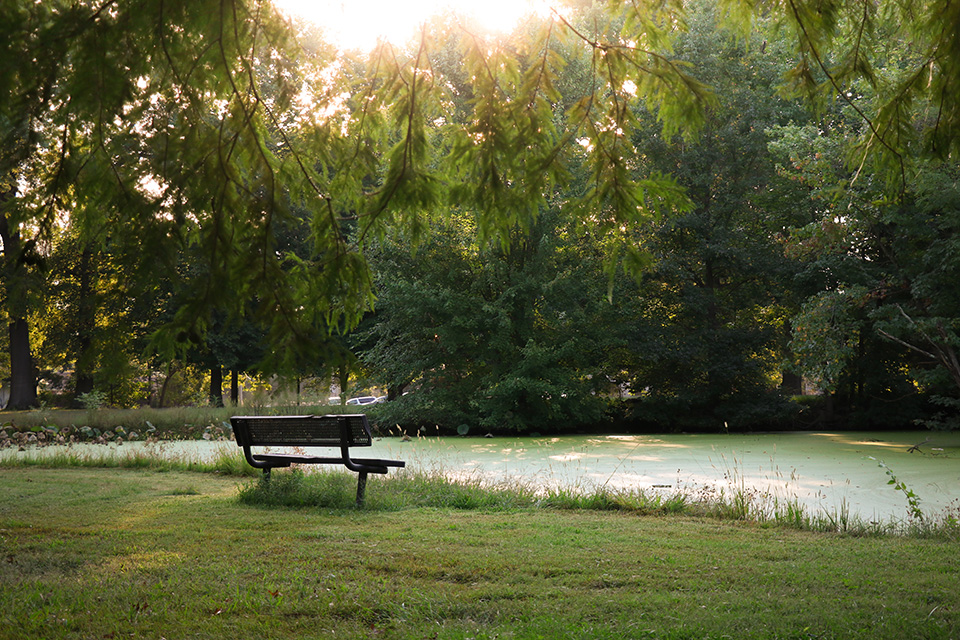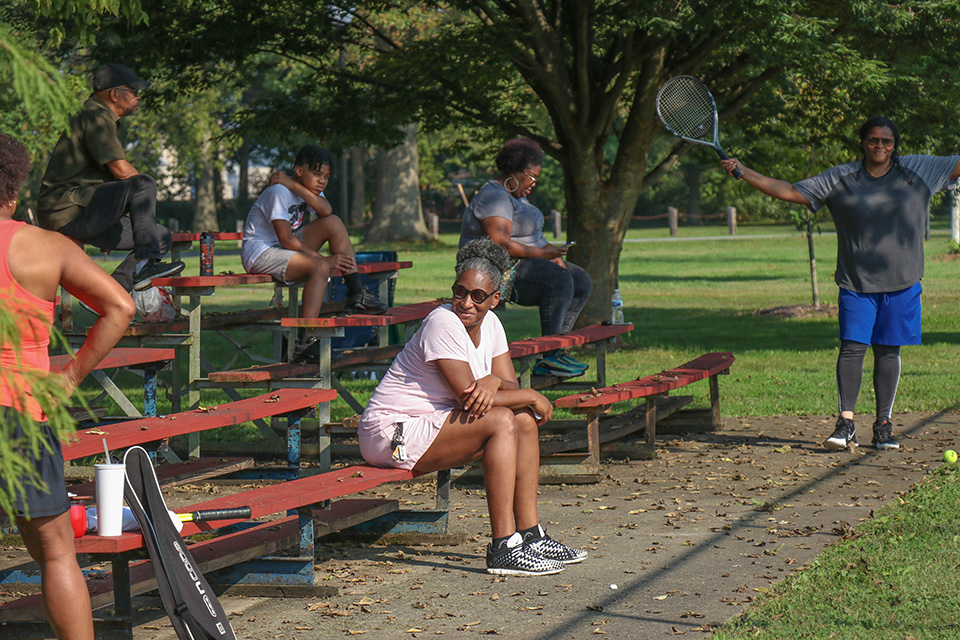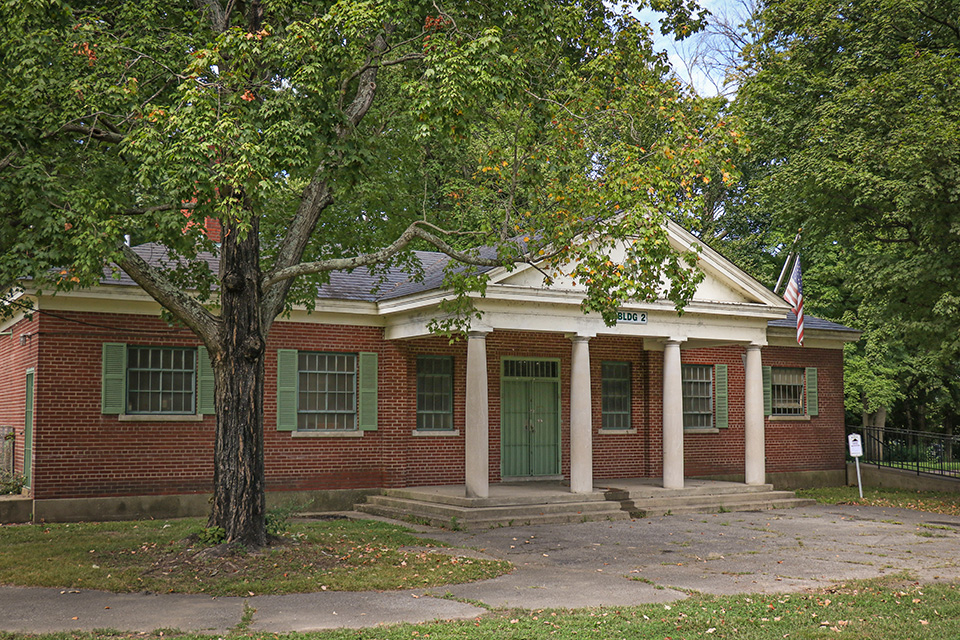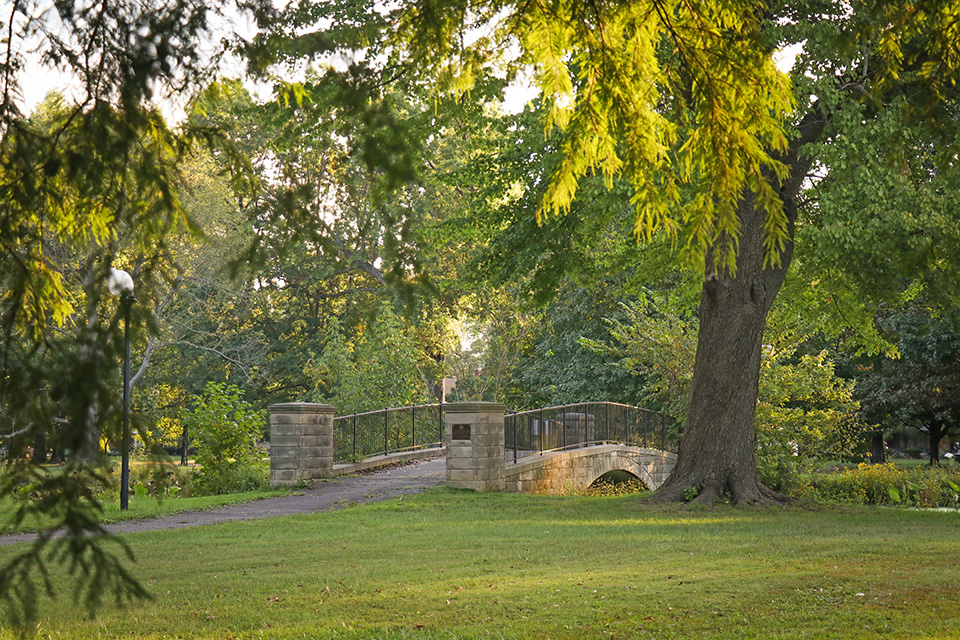The largest park specifically designed for the Black community of Louisville in the era of segregation, Chickasaw Park is also the only park designed by the Olmsted Brothers firm during the period of park segregation. A part of Louisville’s historic park system begun by Frederick Law Olmsted, Sr., and completed by his sons, John Charles and Frederick, Jr., Chickasaw Park has a deep and rich history of fostering community and producing strong athletes, including Muhammad Ali, who trained at the park in his youth. The park now faces issues of deferred maintenance and a threat of erosion due to its proximity to Ohio River.
History
In 1891 Frederick Law Olmsted, Sr. (considered the “father of landscape architecture”), addressed the Salmagundi Club, a small group of civic leaders in Louisville, Kentucky, to further their interest in establishing a park system for the city. The resulting commission created a network of parks and boulevards: one of five such systems in the country, and one of only two systems designed by Olmsted, Sr., in collaboration with his sons, Frederick Law Olmsted, Jr., and John Charles Olmsted (the Olmsted Brothers firm).
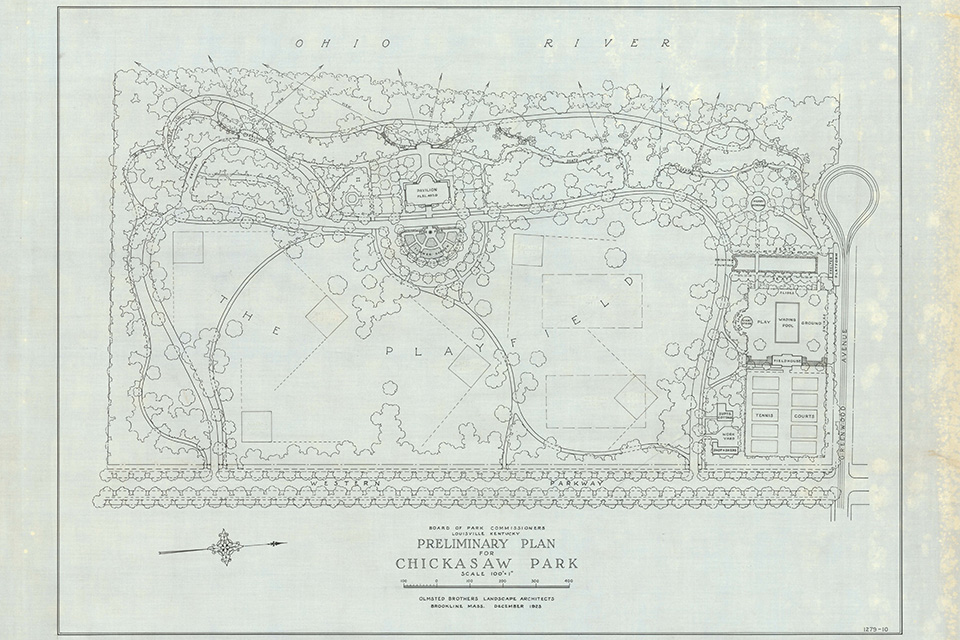 Preliminary Plan for Chickasaw Park by Olmsted Brothers Landscape Architects, 1923. Photo courtesy Olmsted Archives.
Preliminary Plan for Chickasaw Park by Olmsted Brothers Landscape Architects, 1923. Photo courtesy Olmsted Archives.
Louisville’s Park and Parkways System is anchored by three large parks along the city’s perimeter—Iroquois Park, Cherokee Park, and Shawnee Park—representing the diverse terrains of the city, including a heavily-wooded mountainous landscape, sloping hills and pasturelands, and the low lying plain of the Ohio River’s bottomland, respectively. The system is tied together by nearly fifteen miles of parkways realized over a 30-year period, providing connectivity for pedestrians, cyclists, and vehicles.
Along with the large parks, fifteen smaller neighborhood parks and squares were established. One such park, designed by the Olmsted Brothers firm in 1923 and fully implemented by the 1930s, was specifically created to serve the African American community of Louisville until the city’s parks were desegregated in 1954-55. Situated in the West End, Chickasaw Park was the largest park for Blacks in segregated Louisville, and believed to be the only municipal park explicitly designed for African Americans by the Olmsted Brothers firm in the country. During the city’s decades of segregation, Chickasaw remained the only park to offer full access to recreational space and other public park amenities to the Black community of West End, while nearby larger Shawnee Park, situated just a few blocks to the north, remained open to the white community only.
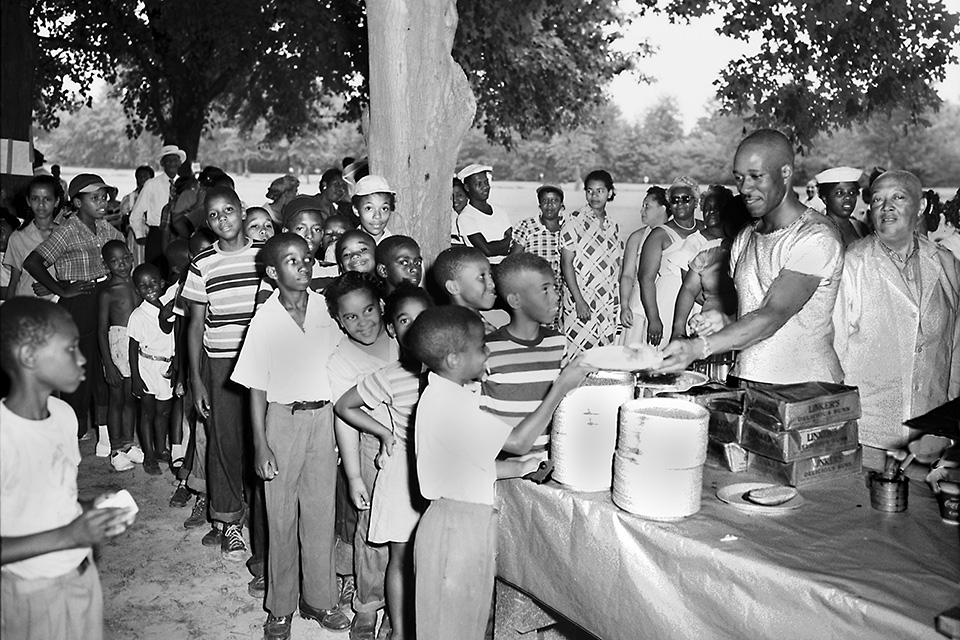 Crowds lined up for food at Chickasaw Park, 1951. Photo courtesy University of Louisville Library Caulfield & Shook Collection.
Crowds lined up for food at Chickasaw Park, 1951. Photo courtesy University of Louisville Library Caulfield & Shook Collection.
The park comprises the grounds of what was previously the country estate of John Henry Whallen, manager of several burlesque theatres throughout the country and a political boss of the Democratic Party at the turn of the century. Whallen’s estate was called “Spring Bank Park,” a name also given to the whiskey company run by himself and his younger brother James. When John Whallen died in 1913, he left the reigns of the whiskey business to his brother, and his estate, overlooking the Ohio River, vacant. Within ten years, the land was obtained by the city and ground broke on Chickasaw Park.
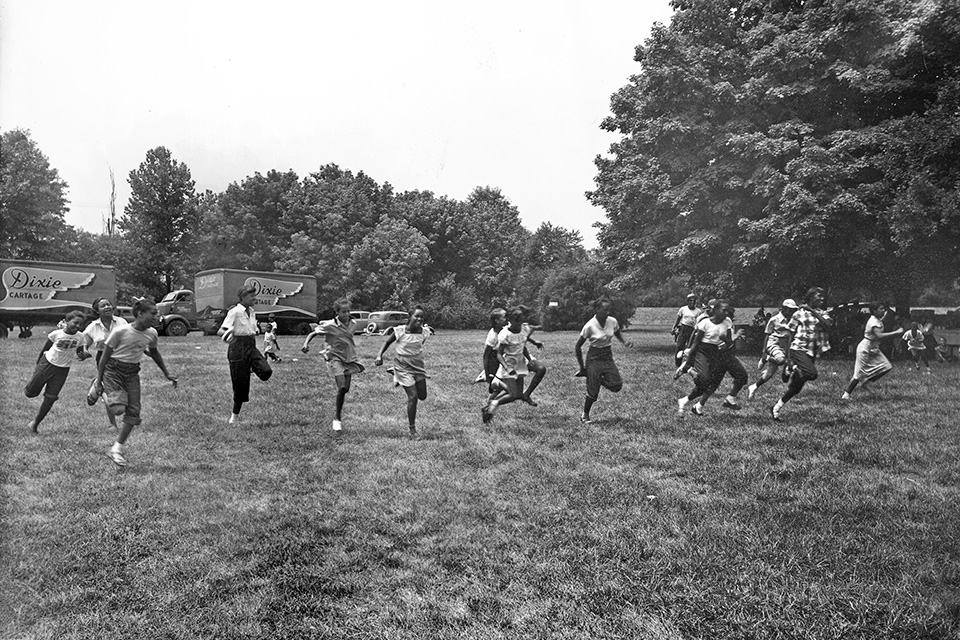 Children playing in Chickasaw Park, 1951. Photo courtesy University of Louisville Library Caulfield & Shook Collection.
Children playing in Chickasaw Park, 1951. Photo courtesy University of Louisville Library Caulfield & Shook Collection.
Spanning 61 acres, the west edge of the park runs along the east bank of the Ohio River, with the east side of the park abutting Southwestern Parkway. One significant and unique feature of the park is its clay tennis courts, a ground material more commonly used for Continental European and Latin American courts. The Chickasaw clay courts are composed of crushed metabasalt, lending them a green hue. The courts, the only free public clay tennis courts in the city of Louisville, have been utilized by the West Louisville Tennis Club since 1923, and many tournaments have been held at the park. Althea Gibson, an African-American pro tennis player, competed in the Mid-Mac Tennis Tournament here in the 1940s. She later went on to win Wimbledon and the U.S. Nationals in both 1957 and 1958.
Additional park features include a fishing pond, situated in the southeast quadrant of the park, as well as various community amenities for active and passive recreation, including picnic areas, playgrounds, a splash pad, walking path, and several ballfields. Chickasaw Park has a rich history of fostering community and producing strong athletes, including Muhammad Ali, who trained at the park in his youth.
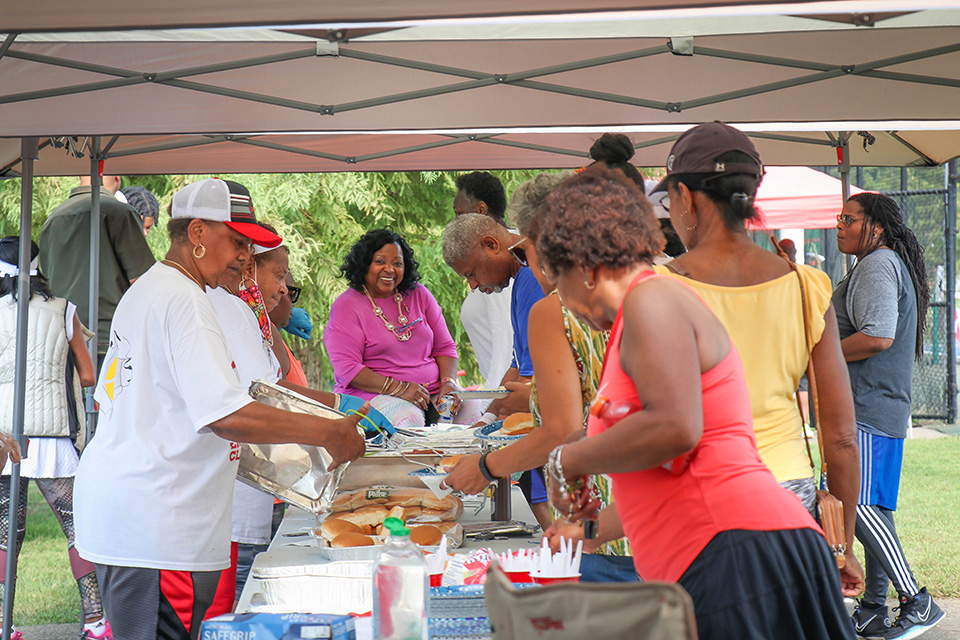 Chickasaw Park, Louisville, KY. Photo courtesy Jesse Hendrix, 2021.
Chickasaw Park, Louisville, KY. Photo courtesy Jesse Hendrix, 2021.
The Louisville Park and Parkway System was listed in the National Register of Historic Places in 1982. In 1989, the Louisville Olmsted Parks Conservancy was formed as a non-profit partner of Louisville and Metro Parks to preserve and restore the Olmsteds’ legacy in the city.
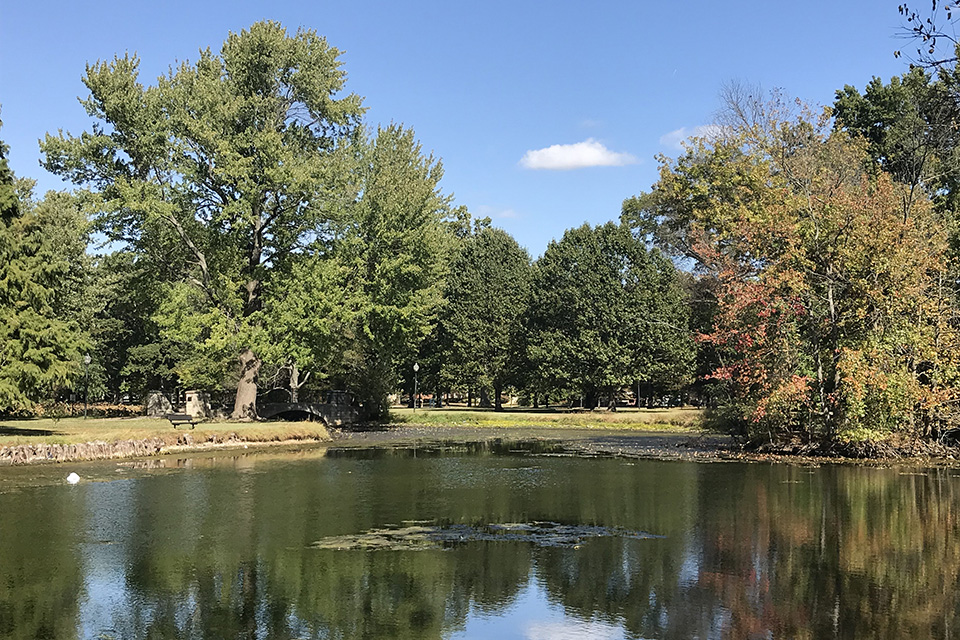
Threat
Chickasaw park has faced erosion, due to its proximity to the Ohio River, for the duration of its century-long lifespan. Other environmental concerns include contaminants found in the pond water, which was dredged in the early 2000s, and which already faces urgent storm water management and pollutant issues again, just twenty years later.
The clay tennis courts, a special and well-loved feature of the park, are more difficult to maintain than the asphalt, grass, or concrete paving materials more typical to courts throughout the United States. The clay needs to be rolled and painted regularly, a significant maintenance cost and continuous effort that requires consistent staffing and funds. Additionally, the courts must be checked for porosity and adequate rainwater infiltration. In 2019, Olmsted Parks Conservancy successfully raised funds to recondition the courts; however, this is an ongoing maintenance issue that will require financial support for the duration of the courts’ lifespan.
Overall, these water management and other issues point toward a common tale of deferred maintenance in public parks. Yet, the obstacles faced at Chickasaw Park are more severe: while it was a critical safe public space for the Black community in the West End neighborhood of Louisville in the first half of the twentieth century, and one that was cherished and cared for by its constituents, the park never received the same level of civic maintenance efforts or funding that the white parks benefited from. As a result, Chickasaw now faces more severe consequences of neglect than its neighboring parks within the same park system.
What You Can Do to Help
Fill out the Olmsted Parks Conservancy’s survey, to aid in their efforts to advocate for funds to be allocated to Chickasaw Park.
Donate to or become a member of the Olmsted Parks Conservancy, and indicate that you wish your donation to be earmarked for Chickasaw Park.
Write to the Louisville Parks Department, urging them to prioritize Chickasaw Park when allocated future maintenance funds and staffing:
P.O. Box 37280, Louisville, KY 40233
Phone: (502) 574-7275
Contact the Mayor’s Office and urge Mayor Greg Fischer to prioritize parks funding, and especially maintenance needs at Chickasaw park, which has been long-neglected within the city’s beloved Olmsted park system.

